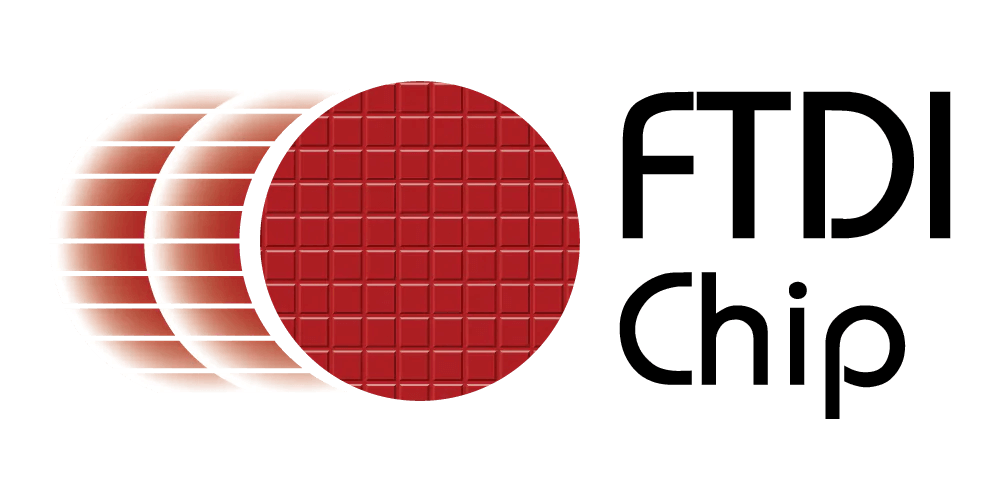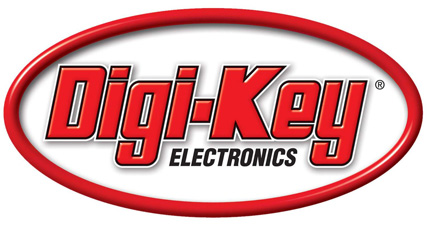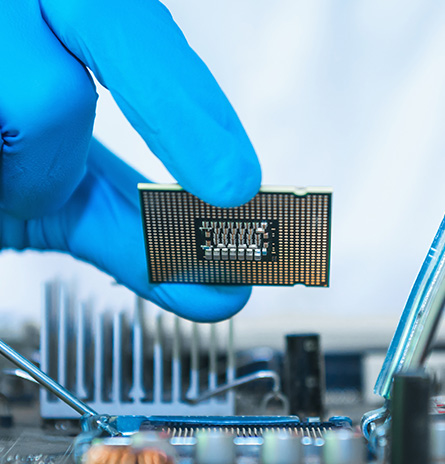Smart Camera
A smart camera is an advanced imaging device that integrates image capture, processing and analysis within the camera itself. Unlike traditional cameras that only capture images or video, smart cameras have embedded processors and software that allow them to perform complex tasks such as object detection, recognition, tracking and other forms of image analysis. These capabilities make smart cameras suitable for a variety of applications including industrial automation, security and surveillance, robotics and home automation.
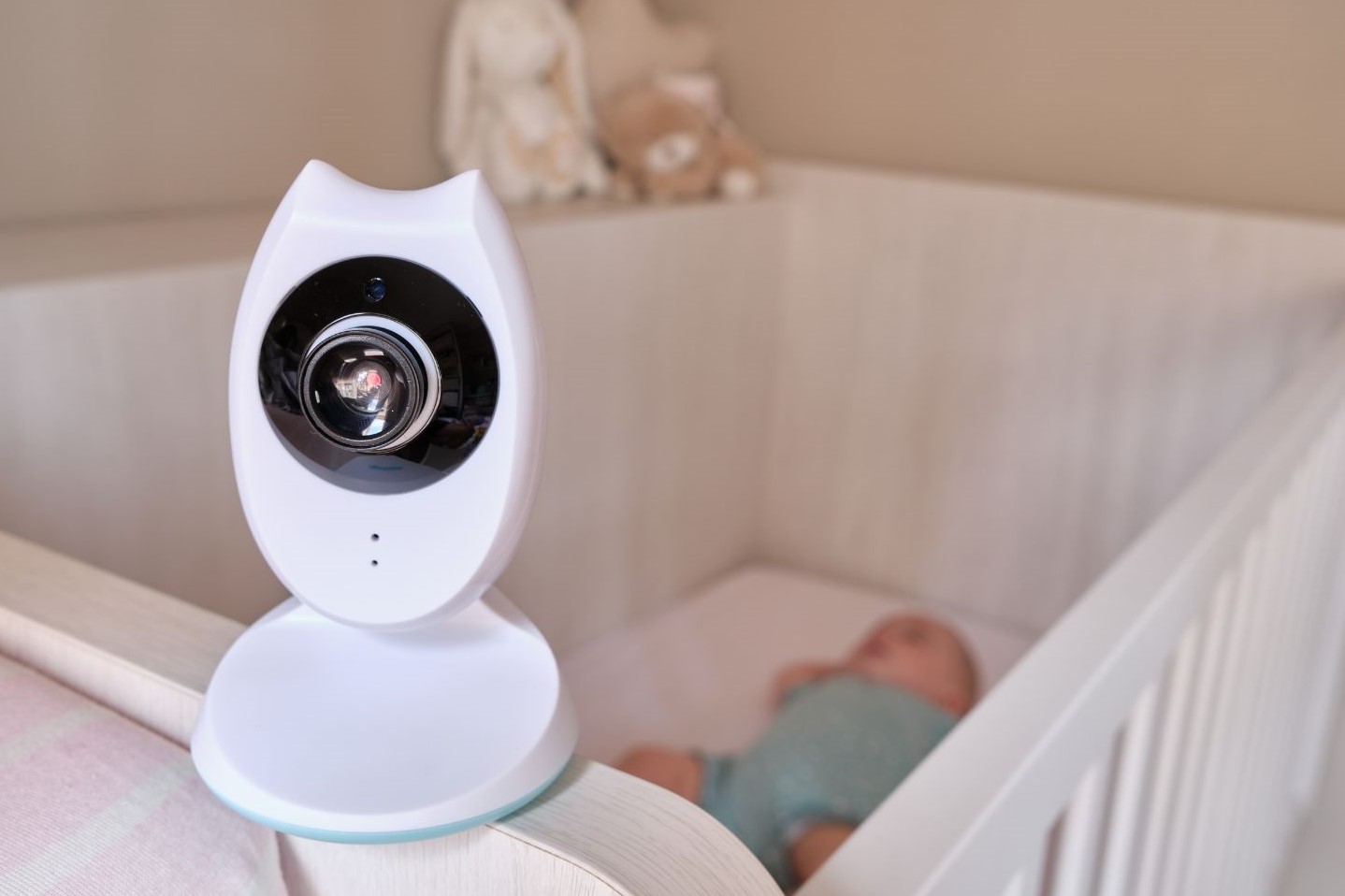
Key Features of a Smart Camera
-
- Integrated Processor
Embedded processors or DSPs (Digital Signal Processors) handle image processing and analysis
-
- Image Sensors
High-quality image sensors (CMOS or CCD) capture images or video
-
- Connectivity
Various communication interfaces like Ethernet, USB, Wi-Fi and sometimes UART, SPI or I2C
-
- Storage
Onboard storage for images, videos and data
-
- Software
Preloaded software for image processing tasks such as machine vision algorithms
-
- I/O Ports
Digital I/O for triggering and integration with other systems
Using an FTDI USB Device with a Smart Camera
FTDI USB devices are typically used for serial communication and can be utilized to interface a smart camera with other systems or components. This could include configuring the camera, sending commands, retrieving data or integrating the camera with other devices via UART, SPI or I2C protocols.
Example Application: Home Automation Security System
In this example, we will use a smart camera for a home automation security system. The smart camera will monitor the entrance of a house, detect motion and recognize faces. An FTDI USB-to-UART interface will be used to connect the smart camera to a home automation hub (such as a Raspberry Pi) for configuration and data retrieval.
FTDI products can be integrated into various applications to allow for:
-
- Port expansion
- USB charging
- USB connectivity to phone or PC
- Data download
- Synchronization to application software either on PC or system with USB Host
- Firmware updates
- Configuration and more!
FTDI IC’s have the following key features making it an ideal candidate for the application:
-
- USB Full / High / SuperSpeed connectivity depending on the application requirements
- Multiple data interfaces including UART, RS232, RS485, RS222, SPI, I2C, FIFO and GPIO
- Entire USB protocol handled on the chip. No USB specific firmware programming required.
- EEPROM for customization
- Data transfer rates (up to): UART (12Mbaud), SPI (52.8Mbps), I2C (6.66Mbit/s), FIFO (40MBps for USB2.0 and 400MB/s for USB3.0)
- Integrated receive and transmit buffers for high data throughput
- FTDI’s royalty-free drivers eliminate the requirement for USB driver development in most cases
- Battery Charger Detection which may be used by mobile devices to detect the presence of a charger on the USB port to enable higher current / faster charging of batteries
- Low operating current and USB suspend current
- Extended operating temperature range: -40°C to 85°C (Industrial), -40°C to +105°C (Automotive)
- Available in various compact Pb-free from as small as 12 Pin DFN package (RoHS compliant)!
The block diagram below shows at a high level how FTDI’s IC can be integrated into the application.
The USB port of the application can be connected to a phone, PC, tablet or embedded processor. The application software controls the FTDI IC which may be connected to a processor inside the application and communicates via one of the supported protocols (UART, RS232, RS485, RS222, SPI, I2C, FIFO and GPIO). This could allow for configuration, data download, firmware updates, etc.
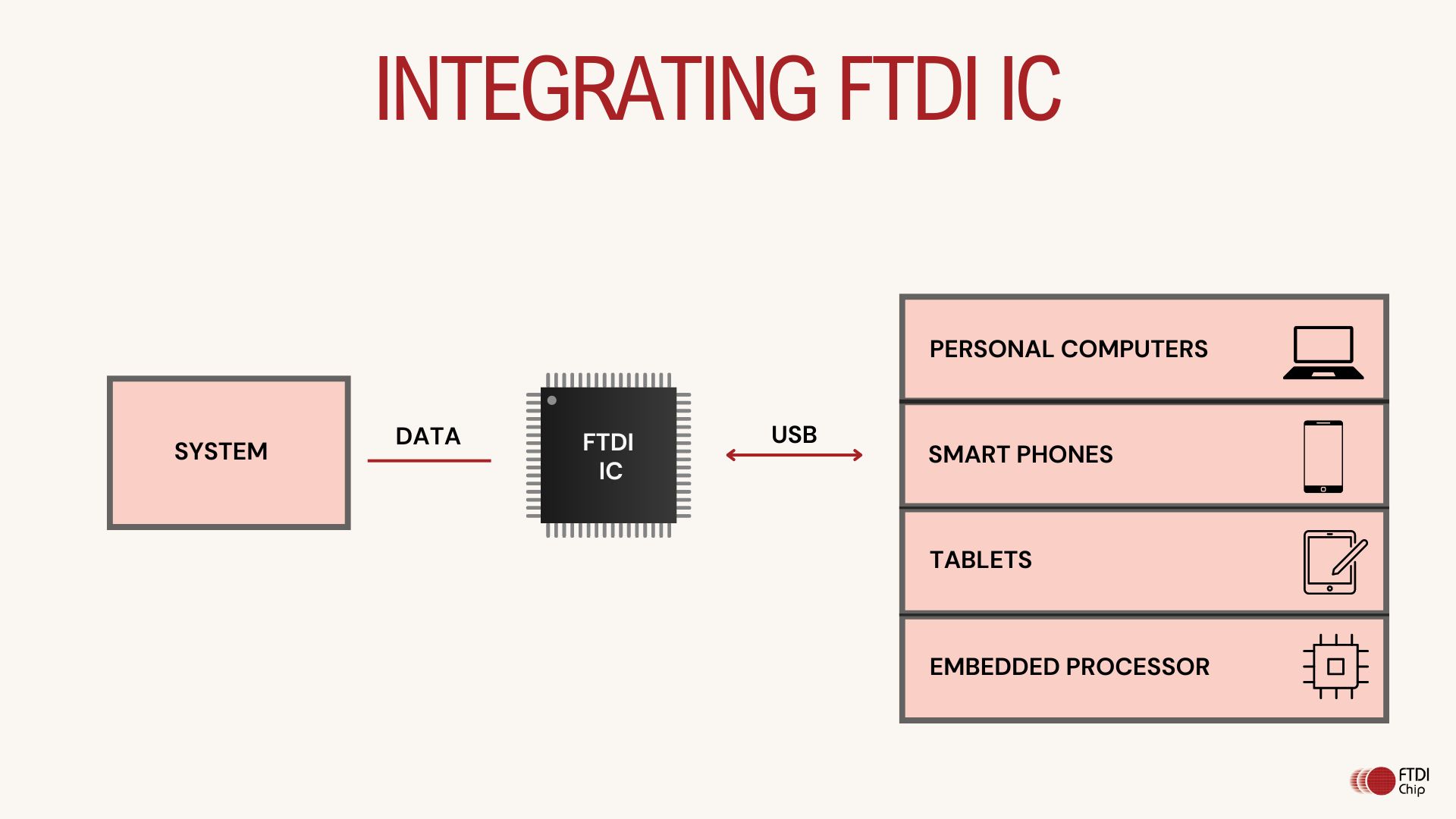
Another typical use case to integrate FTDI ICs into the application is to host the FTDI ICs with an MCU or embedded system which has a USB Host Controller allowing for port expansion and other various communications paths:
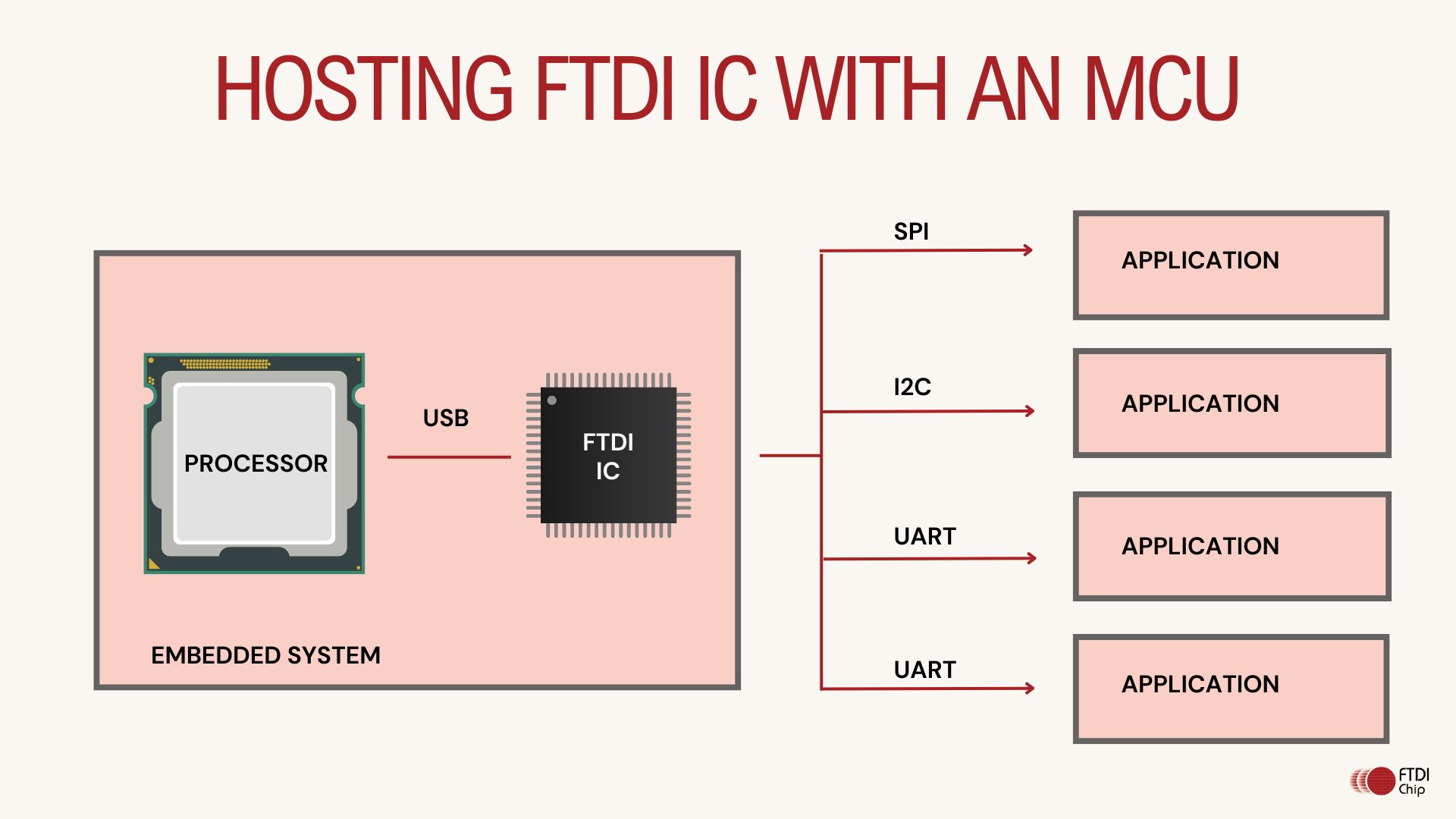
Recommended ICs:
